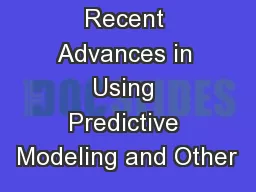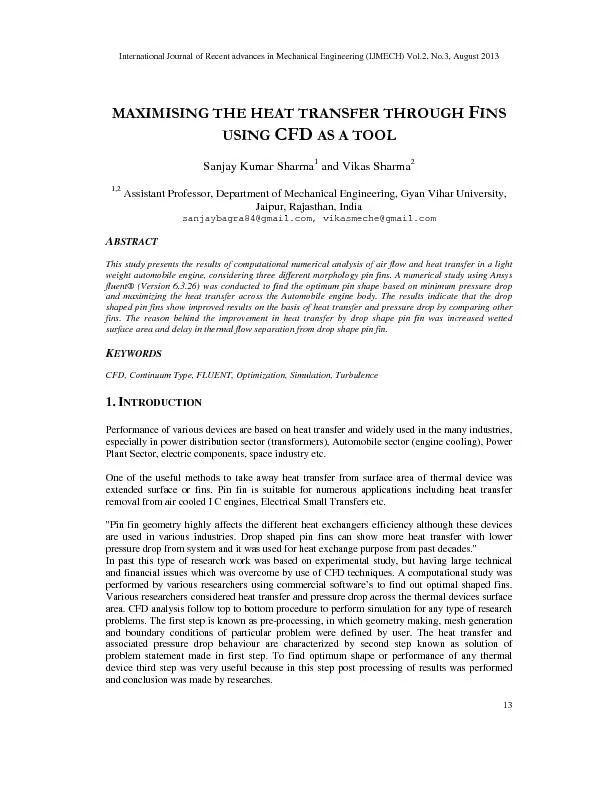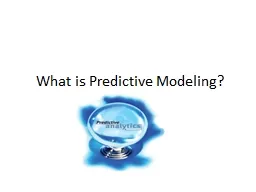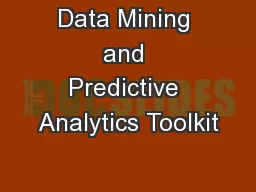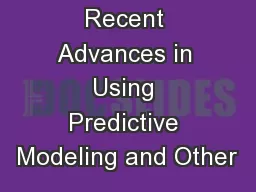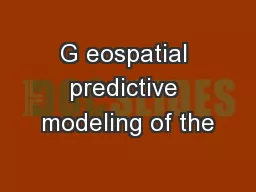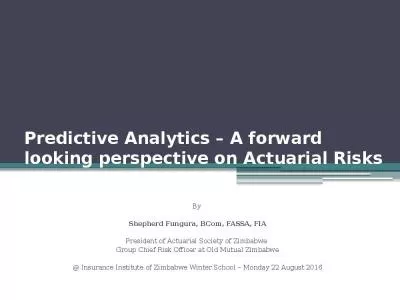PPT-Recent Advances in Using Predictive Modeling and Other
Author : celsa-spraggs | Published Date : 2018-11-04
Techniques for Effective Prevention Programs Raj Nagaraj PhD Chief Technology Officer Deccan International OUTLINE About Deccan CRR And Predictive Modelling Techniques
Presentation Embed Code
Download Presentation
Download Presentation The PPT/PDF document "Recent Advances in Using Predictive Mode..." is the property of its rightful owner. Permission is granted to download and print the materials on this website for personal, non-commercial use only, and to display it on your personal computer provided you do not modify the materials and that you retain all copyright notices contained in the materials. By downloading content from our website, you accept the terms of this agreement.
Recent Advances in Using Predictive Modeling and Other: Transcript
Download Rules Of Document
"Recent Advances in Using Predictive Modeling and Other"The content belongs to its owner. You may download and print it for personal use, without modification, and keep all copyright notices. By downloading, you agree to these terms.
Related Documents

